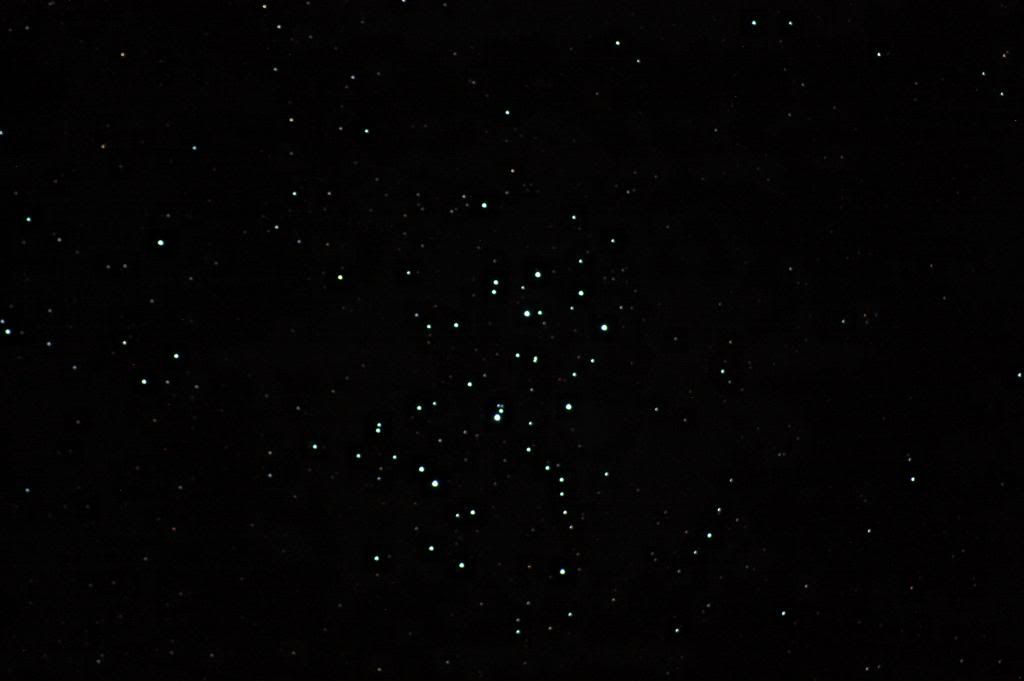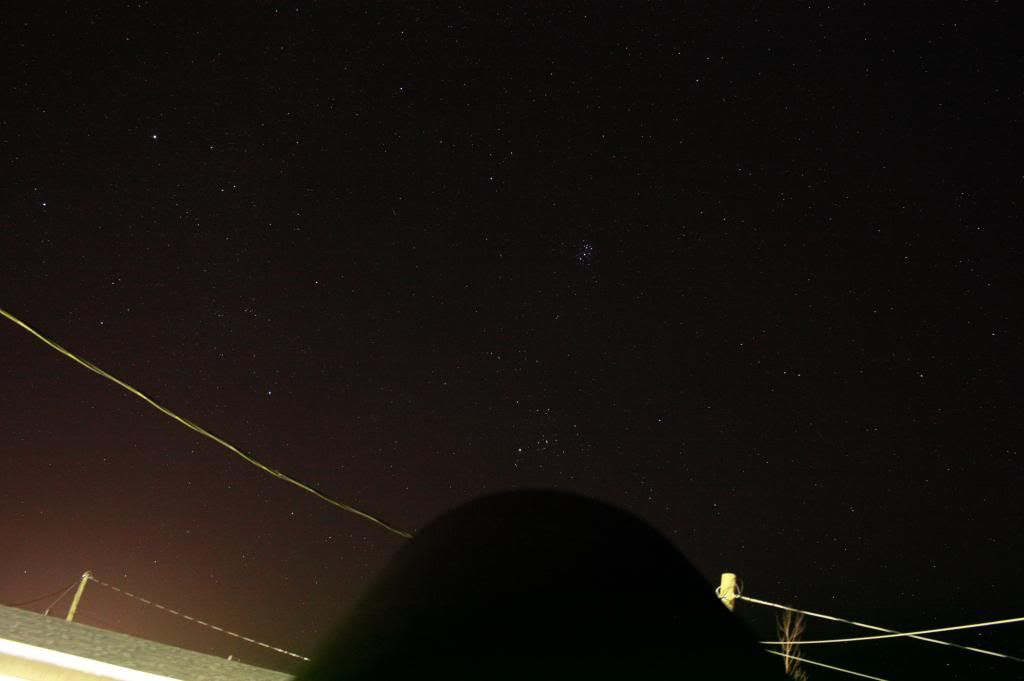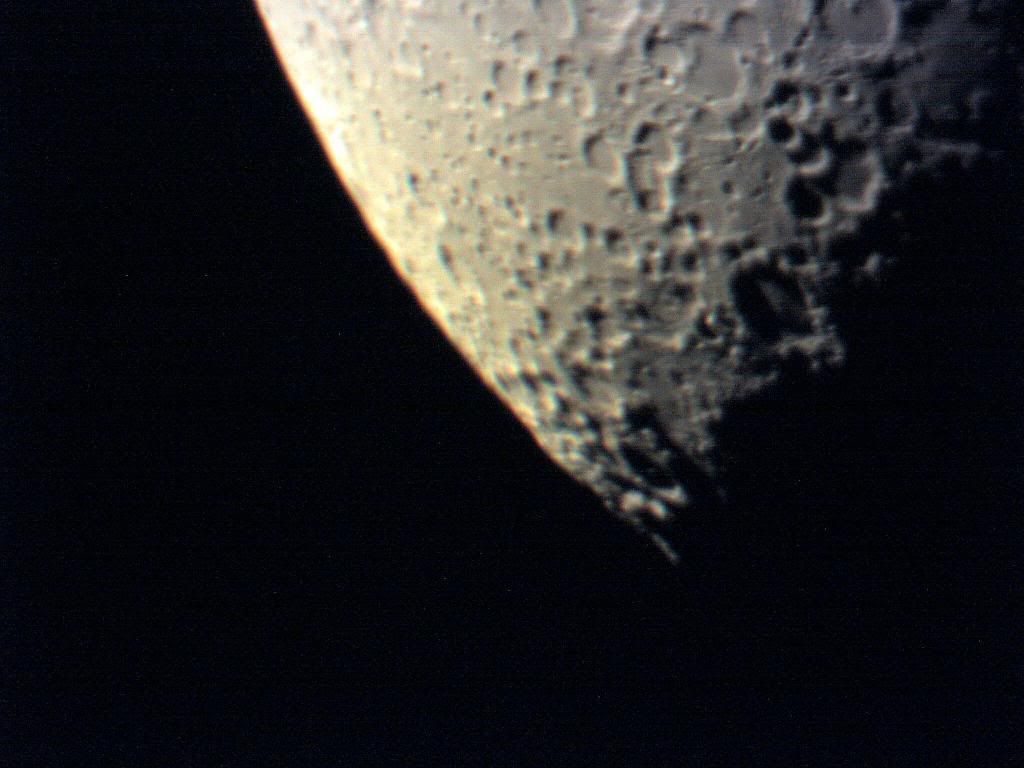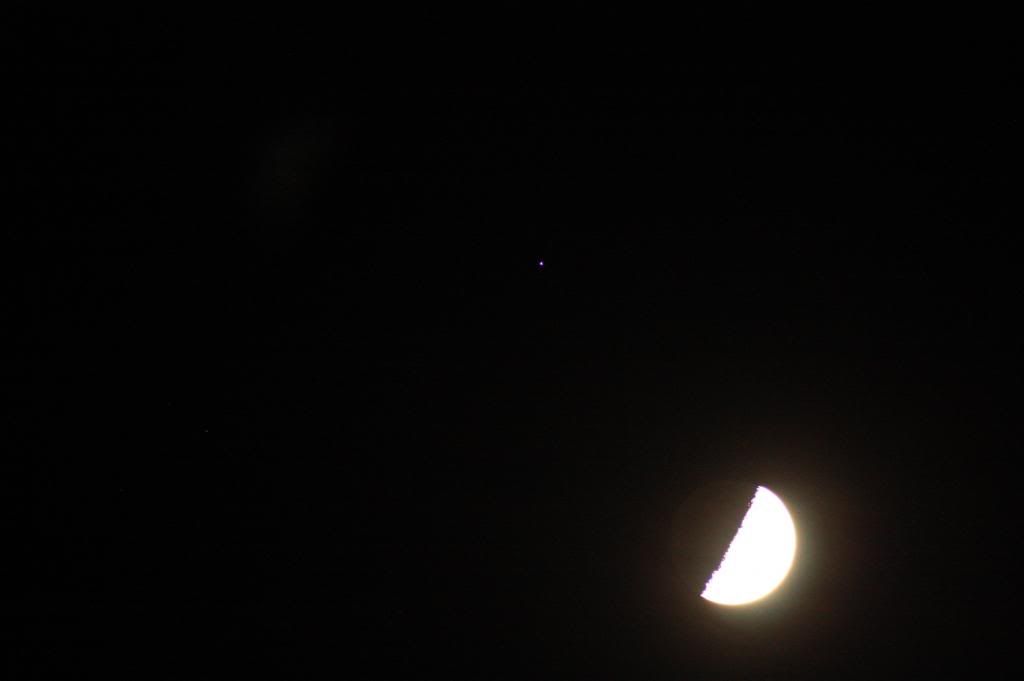Location: Irving Nature Park, Saint John, New Brunswick
Date Time: October 11, 2013 1830-2130 hrs
Weather: 18-12 degrees Celsius from sunset to sundown. Partly cloudy, high wispy clouds, lots of moisture and disturbance in the air. No wind at first, some light wind near the end. Some dew.
Attendance: From the Saint John Astronomy Club: Peter J., June M, Bob H., Stephen T., Ed, Adrian B, Curt N, Chris C, and at least two others whose names I do not know, and myself. Overall there were nine telescopes set up by members of SJAC for the purpose of public observing. From the public: 150 Attendees.
Equipment: 8" Meade LX200 telescope, 2" 32 mm eyepiece with 2X Barlow.
Objective: To spark an interest in astronomy among the general public.
Report: The two big things to remember on this evening were the very, unseasonably warm temps, which brought out the vile mosquitoes and the International Space Station (ISS) pass-over at around 1900 hrs.
It was t-shirt weather when I first arrived at the park to set up and the mosquitoes were out in force. It did not cool down much throughout the evening until after 2100 hrs.
Sometime around 1900, after my scope was set up, someone spotted a very bright satellite going past the Moon from South West to East, high in the sky at around the level of the Moon. I managed to manually track the satellite using the telerad guiding device and had Ed look through the eyepiece at the same time. Ed was able to confirm it was the ISS, because he witnessed the distinctive solar panel 'wings'.
Curt gave a talk at the pavilion, which ended around 1930 hrs. After that the 150 or so public attendees came up to where we had the telescopes set up. At this time Venus was showing up nicely in the west just above some clouds. This was my first target of the night with the telescope.
Venus was 60% illuminated, which made it look like a gibbous moon. Because of the atmospheric distortion it was shimmering with different colors (mostly reddish colors) through the scope. Many observers commented that it looked like Venus was on fire. At least 20 or 30 people observed Venus through my scope. An attempt was made to image Venus with the Canon DSLR camera attached to the eyepiece holder to no avail. Could not get Venus to show up in the view screen for some unknown reason. Time was working against me as the planet was going out of sight behind some trees and far off clouds on the horizon.
After this, the First Quarter Moon was targeted with the telescope. Peter observed an X on the terminator through his telescope, which was a 12" Dobsonion Light Bridge. After observing for a bit, it stood out for me as well in my scope. After a while, when the observer traffic slowed down I attempted to image this X with my cell phone camera. The results are below. It does show up in the image. After doing some research, it was confirmed that this was indeed the
Lunar X that is only visible for 4 hours during the first Quarter Moon.
At least 30 or more people observed the Moon through my scope. Stephen had a line-up of over 20 people at one time to view the Moon through his 25" Dobsonion, known as 'Big Ass'. This is the largest telescope in New Brunswick, I've heard. Its so big they use a ladder to climb up to view through it. Very impressive!
It was very encouraging to have so many people take their time to attend and show an interest in astronomy. They were very thankful to use our telescopes and had some very good questions that, were lots of fun to answer. A very enjoyable evening.
One shooting star and one satellite was observed by myself on this evening. I did hear others say they seen three satellites.
 |
| Image of the Lunar X taken with my Nexus 4 cellphone camera. |
























































